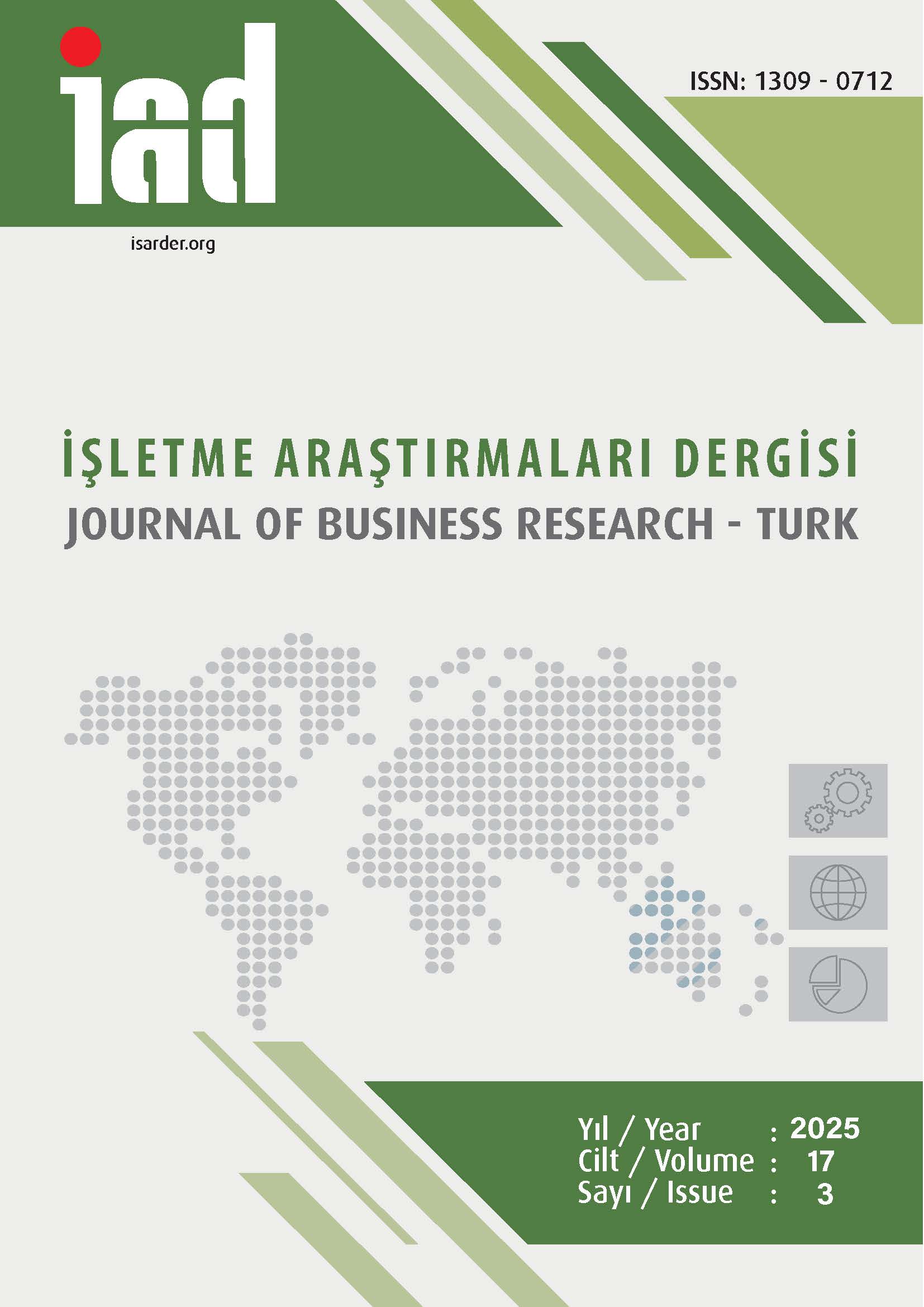Küresel Ekonomik Politika Belirsizliğine Karşı Sektörel Tepkilerin Zamanla Değişimi: Borsa İstanbul Üzerine DCC-GARCH Analizi
DOI:
https://doi.org/10.20491/isarder.2025.2100Anahtar Kelimeler:
Ekonomik Politik Belirsizlik- Endeksi (EPU)- DCC-GARCH- Borsa İstanbul (BİST)- BİST Sektör Endeksleri- Gelişen PiyasalarÖzet
Amaç – Bu çalışma, küresel ekonomik politika belirsizliğinin (Economic Policy Uncertainty – EPU) Borsa İstanbul’daki sektörel etkilerini, zamana yayılan dinamik bir çerçevede incelemeyi amaçlamaktadır. ABD merkezli EPU şoklarının Türkiye gibi gelişmekte olan piyasalarda yalnızca gösterge endeks değil, farklı sektörler üzerinde de farklı yoğunluklarda ve dönemsel olarak değişken tepkiler yarattığı hipotezinden hareketle, sektörel bazlı kırılganlık yapılarının ortaya konulması hedeflenmiştir.
Yöntem – Çalışmada, 2010 Ocak – 2025 Mart dönemine ait aylık veriler kullanılarak BIST 100 endeksi ile birlikte sekiz sektörel endeksin (bankacılık, sanayi, hizmet, teknoloji, elektrik, tekstil, makine-eşya ve metal ana sanayi) ABD EPU endeksiyle ilişkileri analiz edilmiştir. Zamana göre değişen korelasyon yapılarının incelenebilmesi amacıyla çok değişkenli DCC-GARCH modeli uygulanmıştır. Modelin geçerlilik koşulları istatistiksel olarak sağlanmış; dinamik koşullu korelasyon katsayıları üzerinden sektörel tepkilerin yönü ve şiddeti dönemsel olarak değerlendirilmiştir.
Bulgular – Elde edilen bulgulara göre, EPU ile sektör endeksleri arasındaki ilişkiler genel olarak negatif ve düşük düzeyli olup, korelasyonlar zaman içinde yön ve büyüklük açısından dalgalanma göstermektedir. Özellikle COVID-19 pandemisi gibi kriz dönemlerinde negatif korelasyonların mutlak değeri artmakta, sektörler EPU şoklarına farklı tepkiler vermektedir. Bankacılık sektörünün diğer sektörlerle yüksek düzeyde korelasyon içinde olduğu gözlenmiş, bu sektörün sistemik yapısı pekiştirilmiştir.
Tartışma- Sonuçlar, EPU’nun Türkiye piyasalarında homojen bir etki yaratmadığını; sektörlerin faaliyet alanlarına ve dışa açıklık düzeylerine göre farklı kırılganlık yapılarına sahip olduğunu göstermektedir. Bu durum, politika yapıcılar açısından makro düzeyde tek tip müdahalelerin yetersiz kalabileceğine işaret etmekte; sektör bazlı, esnek ve dönemsel risk yönetim politikalarının gerekliliğini ortaya koymaktadır. Ayrıca, yatırım kararlarının da zamansal duyarlılığı yüksek portföy stratejileriyle desteklenmesi önerilmektedir.
İndir
Yayınlanmış
Nasıl Atıf Yapılır
Sayı
Bölüm
Lisans

Bu çalışma Creative Commons Attribution-NoDerivatives 4.0 International License ile lisanslanmıştır.





